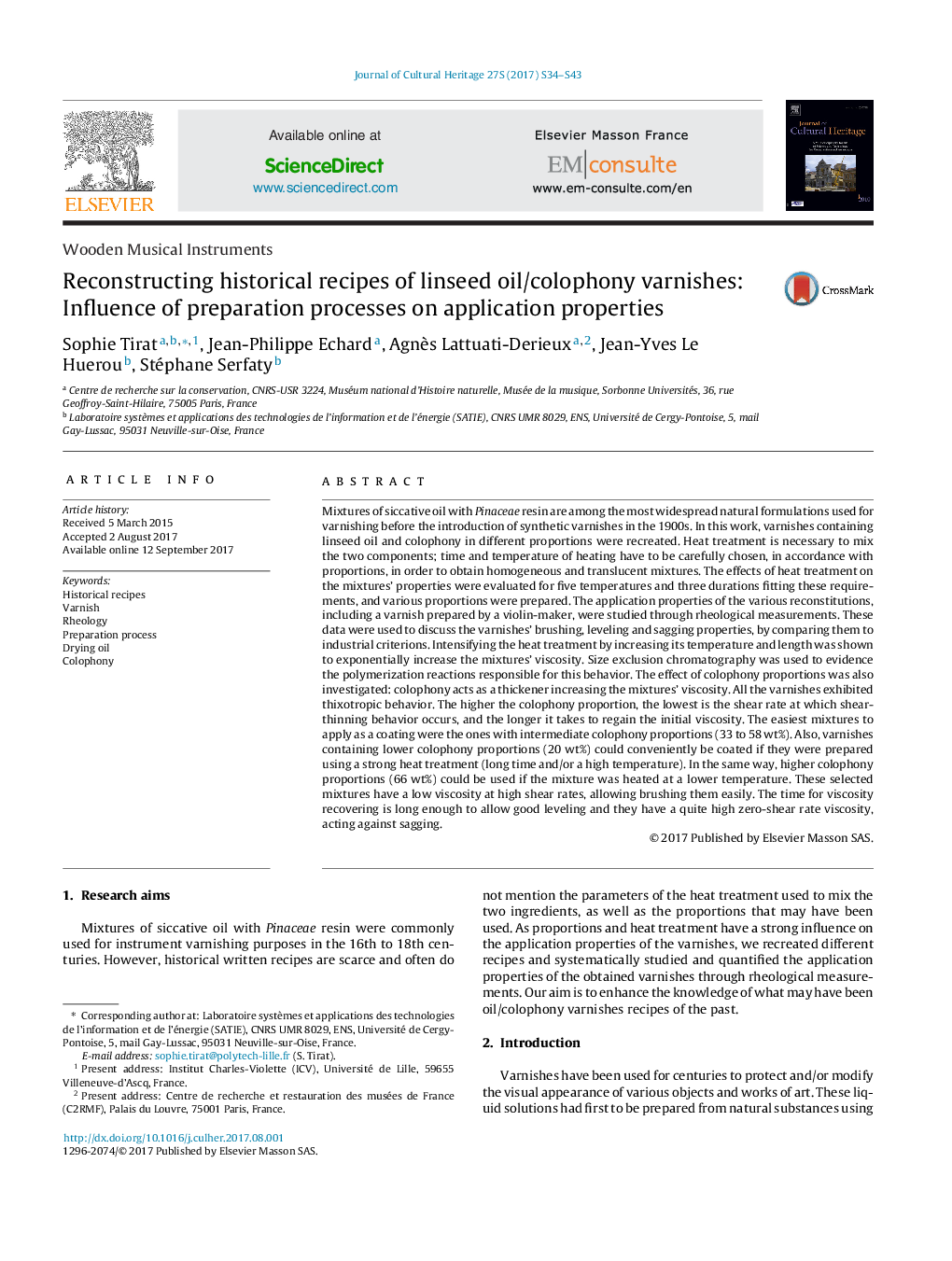| Article ID | Journal | Published Year | Pages | File Type |
|---|---|---|---|---|
| 5112720 | Journal of Cultural Heritage | 2017 | 10 Pages |
Abstract
Mixtures of siccative oil with Pinaceae resin are among the most widespread natural formulations used for varnishing before the introduction of synthetic varnishes in the 1900s. In this work, varnishes containing linseed oil and colophony in different proportions were recreated. Heat treatment is necessary to mix the two components; time and temperature of heating have to be carefully chosen, in accordance with proportions, in order to obtain homogeneous and translucent mixtures. The effects of heat treatment on the mixtures' properties were evaluated for five temperatures and three durations fitting these requirements, and various proportions were prepared. The application properties of the various reconstitutions, including a varnish prepared by a violin-maker, were studied through rheological measurements. These data were used to discuss the varnishes' brushing, leveling and sagging properties, by comparing them to industrial criterions. Intensifying the heat treatment by increasing its temperature and length was shown to exponentially increase the mixtures' viscosity. Size exclusion chromatography was used to evidence the polymerization reactions responsible for this behavior. The effect of colophony proportions was also investigated: colophony acts as a thickener increasing the mixtures' viscosity. All the varnishes exhibited thixotropic behavior. The higher the colophony proportion, the lowest is the shear rate at which shear-thinning behavior occurs, and the longer it takes to regain the initial viscosity. The easiest mixtures to apply as a coating were the ones with intermediate colophony proportions (33 to 58 wt%). Also, varnishes containing lower colophony proportions (20 wt%) could conveniently be coated if they were prepared using a strong heat treatment (long time and/or a high temperature). In the same way, higher colophony proportions (66 wt%) could be used if the mixture was heated at a lower temperature. These selected mixtures have a low viscosity at high shear rates, allowing brushing them easily. The time for viscosity recovering is long enough to allow good leveling and they have a quite high zero-shear rate viscosity, acting against sagging.
Related Topics
Physical Sciences and Engineering
Chemistry
Physical and Theoretical Chemistry
Authors
Sophie Tirat, Jean-Philippe Echard, Agnès Lattuati-Derieux, Jean-Yves Le Huerou, Stéphane Serfaty,
